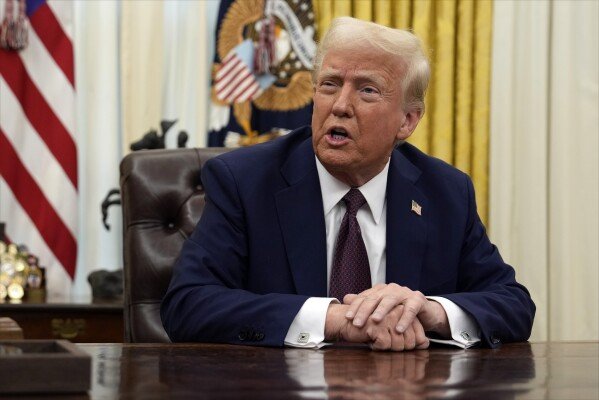In a controversial move, the Trump administration ends safe-haven programs for thousands of immigrants from Honduras and Nicaragua who have lived legally in the United States for decades under Temporary Protected Status (TPS). The decision sparked intense debate across political, humanitarian, and legal communities.
What Are Safe-Haven Programs and TPS?
Temporary Protected Status (TPS) is a humanitarian program offered by the U.S. government that allows immigrants from countries affected by armed conflict, natural disasters, or other extraordinary conditions to live and work legally in the United States. TPS is not a path to permanent residency or citizenship but has provided essential protection to those whose return to their home countries would be unsafe.
Since the late 1990s, people from Honduras and Nicaragua have lived in the U.S. under TPS. These programs were originally granted after Hurricane Mitch devastated Central America in 1998, killing over 10,000 people and displacing millions. Many of these immigrants have since built lives, families, and careers in the United States.
Trump Ends Safe-Haven Programs: What It Means
The Trump administration’s decision to end these protections affects over 57,000 Hondurans and 2,500 Nicaraguans, according to data from U.S. Citizenship and Immigration Services (USCIS). These individuals, some of whom have lived in the U.S. for more than two decades, now face the risk of deportation unless they find another legal way to remain.
For most, such options are limited or non-existent.
Here’s a breakdown of what the end of these programs means:
- Loss of legal status: Once TPS protections expire, recipients lose their legal right to live and work in the U.S.
- Possible deportation: Without legal status, they become subject to removal proceedings.
- Family separation: Many TPS holders have children who are U.S. citizens. Families could be split apart.
- Economic impact: These immigrants contribute significantly to the U.S. economy. Their departure could affect various sectors, including construction, hospitality, and healthcare.
Reasons Cited by the Trump Administration
The Department of Homeland Security (DHS) under President Trump argued that the original conditions which justified TPS for these countries no longer exist. In the case of Nicaragua and Honduras, the administration stated that recovery from the 1998 hurricane had progressed enough to justify ending the special protections.
A DHS official said, “The purpose of TPS is to provide temporary refuge, not to allow long-term residency by default.”
This approach marked a shift from previous administrations, both Democratic and Republican, which had repeatedly renewed TPS designations based on evolving conditions in the countries of origin.
Reactions from Affected Communities

The announcement that Trump ends safe-haven programs for Hondurans and Nicaraguans caused widespread fear and uncertainty in immigrant communities across the U.S.
Many TPS holders say they have little left in their home countries and consider America their only home.
Maria Alejandra, a TPS holder from Honduras who has lived in Texas for 21 years, shared her story:
“I have two kids who are American citizens. My husband is a mechanic, and we pay our taxes. We’ve done everything right. Now they say we have to leave? Where will we go?”
Advocacy groups and immigrant rights organizations condemned the move, calling it heartless and disruptive.
Key Concerns Raised:
- Displacement of long-term residents
- Risk of family separations
- Threat to the mental and emotional well-being of U.S.-born children
- Loss of labor force in key industries
Political and Legal Backlash
Several members of Congress, especially Democrats and moderate Republicans, criticized the decision. Lawmakers from Florida, Texas, and California — states with large Central American populations — pushed for legislative solutions to offer permanent residency to TPS holders.
Senator Kamala Harris (D-CA) said, “This is not who we are as a nation. These people fled disasters. They’ve lived here legally. Kicking them out now is cruel.”
Lawsuits were also filed to block the termination of TPS, claiming the decision was racially motivated and failed to follow proper legal procedures. Some courts issued temporary injunctions, allowing TPS holders to remain in the U.S. while cases proceeded.
Economic Impact of Ending TPS
Ending TPS has both social and economic consequences. According to research from the Center for American Progress:
- TPS holders from Honduras and Nicaragua contribute billions of dollars annually to the U.S. economy.
- The majority are employed in essential sectors such as:
- Construction
- Healthcare
- Agriculture
- Homecare
- Many are homeowners and pay property taxes, contributing to local economies.
Suddenly removing thousands of workers from the workforce could create disruptions and slow growth, particularly in industries already experiencing labor shortages.
Situation in Honduras and Nicaragua
Although the Trump administration cited improved conditions in these countries, both continue to face significant challenges.
Honduras:
- Widespread gang violence
- High poverty rates
- Government corruption
- Environmental disasters, including more recent hurricanes
Nicaragua:
- Political instability under President Daniel Ortega
- Suppression of free speech and protests
- Human rights violations
- Fragile infrastructure
Human rights organizations argue that returning people to such conditions may put their lives at risk.
Life in Limbo: Stories from the Ground
For many TPS holders, the end of safe-haven programs leaves them in legal and emotional limbo. After years of contributing to their communities, they now face an uncertain future.
Juan Carlos, a Nicaraguan TPS holder living in Florida, described his situation:
“I’ve been here since I was 17. I have a family, a job, and a mortgage. Nicaragua is not safe. But now, I have to choose between staying with my family or being forced to leave.”
Such stories are common. According to a survey by the National Immigration Forum:
- Over 85% of Honduran and Nicaraguan TPS holders have lived in the U.S. for more than 15 years.
- 70% have U.S.-born children.
- Nearly 50% own homes.
These statistics highlight the deeply rooted lives many have built — lives now at risk of being uprooted.
Push for a Permanent Solution
In response to the crisis, immigration advocates and some lawmakers pushed for legislation that would allow long-term TPS holders to apply for permanent residency.
One such bill, the American Promise Act, aimed to provide a pathway to citizenship for TPS holders who have lived in the U.S. for many years and have maintained a clean legal record.
However, political polarization has stalled many such efforts in Congress.
Biden’s Reversal and Temporary Relief
After President Biden took office, his administration temporarily restored TPS protections for several countries, including Honduras and Nicaragua, citing ongoing dangers and instability. However, these renewals remain temporary, and the long-term future of TPS continues to be uncertain.
The Biden administration also announced plans to review all immigration-related decisions made under the Trump era, signaling a broader shift in policy direction.
Conclusion: What Comes Next?
The fact that Trump ends safe-haven programs for Hondurans and Nicaraguans underscores a larger debate over immigration, national identity, and humanitarian responsibility. For the thousands affected, life remains in a state of limbo, torn between the home they know and the country they left behind decades ago.
As legal battles continue and legislative action stalls, these individuals and their families face an uncertain future. The story of TPS holders is a human one — full of resilience, hope, and fear. How America chooses to treat them may shape not only its immigration system but also its moral standing on the world stage.
Do Follow on Instagram
Read Next – Elon Musk America Party: What to Know About Third Parties in the U.S.





